Introduction
Product Overview
{{section_header}}{{section.name}}{{/section_header}}
The Bowers & Wilkins P5-MFI headphones are a set of on-ears that don't skimp on the style! Well, they don't exactly slather on the style either, but then again style isn't something one should slather. Bowers & Wilkins understands this and keeps their design crisp, clean, and simple, with faux leather pads and brushed metal backs to the ear cups.
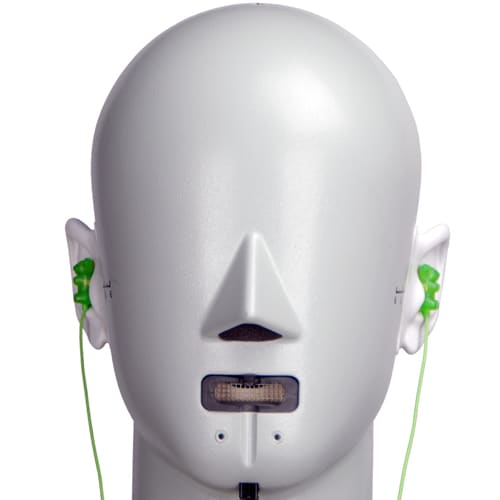
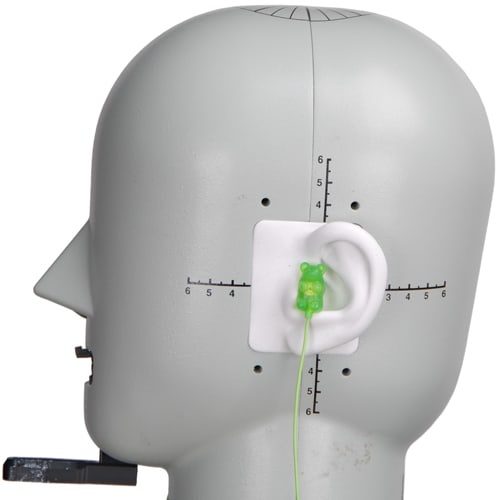
Speakers
{{section_header}}{{section.name}}{{/section_header}}
Beneath the P5-MFI's faux leather cups you'll find the speaker element. It's behind a fine metallic mesh, so there's really not much to do aside from look at it. The left ear cup also features a plug, which allows you to swap out the headphones' cable.
Sides
{{section_header}}{{section.name}}{{/section_header}}
Back
{{section_header}}{{section.name}}{{/section_header}}
The back of the headphones feature some branding on their brushed metal ovals, as well as a printed faux leather.
Band
{{section_header}}{{section.name}}{{/section_header}}
Cable
{{section_header}}{{section.name}}{{/section_header}}
The headphones feature a four foot-long cable with an in-line remote and mic.
The plug is a standard 1/8-inch plug, but doesn't have much in the way of a cord guard.
There isn't much of a cord guard where the cable runs into the headphones, either. This is partially because of it's super special design, however, which we'll describe in the very next section!
Additional Features
{{section_header}}{{section.name}}{{/section_header}}
Oh man, look at that. Super secret cable reservoir under the ear cup, snaked around the speaker. If you don't like a cable with a remote and mic, or you've simply busted your cable, you can swap it out and replace it with a new one. Why is this plug hidden? We're guessing to prevent the cord from unplugging too easily. Why don't they just feature a threaded plug like every other headphone manufacturer with a swappable cable option? We're not sure.
In the Box
{{section_header}}{{section.name}}{{/section_header}}
In the P5-MFI's packaging, you'll get a pouch and a replacement cable (lacks a remote and mic).
Durability
{{section_header}}{{section.name}}{{/section_header}}
The main feature the P5-MFI features that increases its durability is its swappable cord. The cable itself is a relatively thin gauge, and given the cost of the headphones, the ability to replace this cable is important. It also features a sturdy design in general, but it's nothing above and beyond.
Aesthetics
{{section_header}}{{section.name}}{{/section_header}}
A lot of the headphones' purchase price is going to go towards aesthetics. The headphones feature a clean-looking aesthetic that wouldn't look out of place in a professional setting.
Frequency Response
{{section_header}}{{section.name}}{{/section_header}}
The Bowers & Wilkins P5-MFI headphones had a fair frequency response. The bass is pretty heavily emphasized, which is common in a set of portable headphones. There are also slight peaks at the 3kHz and 7kHz marks, which, among other things, increase the attack on a guitar and cymbals respectively. Other than these two bumps, the frequency response is fairly flat. The P5-MFIs had a good response here, but don't expect a pair of reference headphones.

Click here for more information on our frequency response test.
Distortion
{{section_header}}{{section.name}}{{/section_header}}
The P5-MFIs didn't have a huge amount of distortion, but audiophiles will be quick to notice they weren't distortion free. At their most distorted, the P5-MFIs have less than one half of one percent total harmonic distortion. What does that mean? They're basically distortion free. Distortion doesn't become annoying until 3%, and anything below 1% falls solidly into the realm of "my golden ears hear imperfections!"
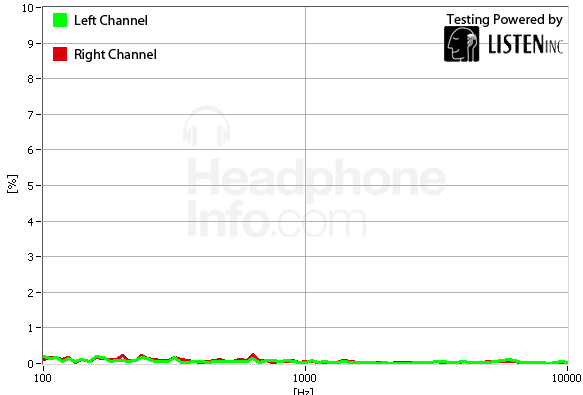
Click here for more information on our frequency response test.
Tracking
{{section_header}}{{section.name}}{{/section_header}}
While the P5-MFIs didn't have perfect tracking, chances are you won't notice the volume swings. The biggest, most sudden swing is the 4dB shift around 400Hz, which really isn't a lot.
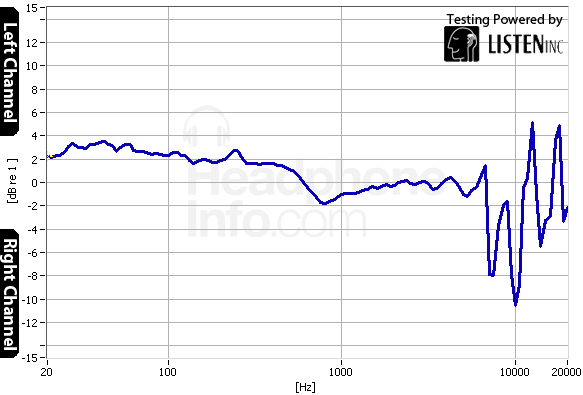
Click here for more information on our frequency response test.
Isolation
{{section_header}}{{section.name}}{{/section_header}}
The Bowers & Wilkins P5-MFI headphones weren't the best isolators. They didn't block out any low-end sound, and when the outside of the cups did start reflecting external noise, it wasn't a whole lot. These aren't headphones to wear on public transit or an airplane, because the ambient noise will drown out your playback.

Click here for more information on our isolation test.
Leakage
{{section_header}}{{section.name}}{{/section_header}}
The P5-MFI headphones seem to create a somewhat poor seal with the head: in addition to being poor insulators, they also tend to leak noise like crazy. These aren't headphones you should wear to the library, museum, jury duty, or any other public, quiet place.
Click here for more information on our leakage test.
Maximum Usable Volume
{{section_header}}{{section.name}}{{/section_header}}
When you crank up the volume on your headphones, sometimes you're also cranking up the distortion. For this test, we crank the headphones up until they reach a dangerous volume (120dB—you really don't want your headphones louder than that) to see how much volume we can get before the distortion hits a noticeable amount: 3%.
We were able to squeeze 114.68dB out of these headphones before we hit an annoyingly perceptible level of distortion. This is a really, really loud output, and should be fine for just about any occasion. Loud, distortion-free output shouldn't be a concern with the Bowers & Wilkins P5-MFI headphones.
Click here for more on our maximum usable volume test
Short-Term Use
{{section_header}}{{section.name}}{{/section_header}}
We thought the Bowers & Wilkins were a fairly comfortable set of on-ears. Just look at these cushioned pillows of faux leather.
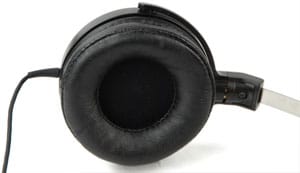
The padding is slightly triangular, with more padding toward the outside edge and less towards the inside.
They don't grip too tightly, but didn't move around a lot when you're walking around. If you're doing something more strenuous than a leisurely stroll, however, the headphones will shift. They're probably not the best set of headphones to take on a jog, but then again, you probably don't want to sweat on a $300 set of headphones.

Extended Use
{{section_header}}{{section.name}}{{/section_header}}
We don't foresee problems with searing these headphones for long periods of time. We thought they remained comfortable even after six hours. Typically a somewhat weak grip on the sides of the head mean the band feels a bit heavy after a few hours. We found that wasn't the case with these headphones. Not only is the band adequately padded, but the material on the ear cups kept a fairly decent grip.
Customizability
{{section_header}}{{section.name}}{{/section_header}}
There aren't a whole lot of ways to customize your P5-MFIs. The band extends a bit and the cups twist around, which are basically the bare minimum of customizability for full-size headphones.
The only trick up the headphones' sleeves is their swappable cable. If you hate the remote and mic, you can swap it out for a plain Jane cable with no in-line features. It's a small customization, but remains a customization nonetheless.

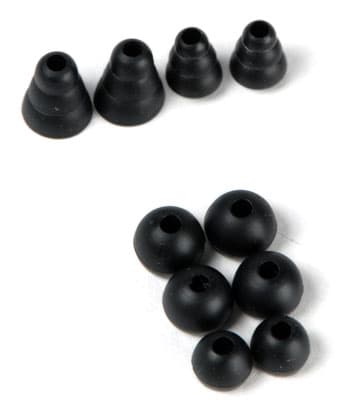
Cable Connectivity
{{section_header}}{{section.name}}{{/section_header}}
The Bowers & Wilkins P5-MFI headphones come with two cables, both around four feet in length: one has a remote & mic, while the other is a plain cable. You can swap these cables by removing the headphones' left ear cup and unplugging the current cable. Aside from this, there aren't any additional connectivity options: you're limited to your four feet of cable.
Portability
{{section_header}}{{section.name}}{{/section_header}}
The P5-MFIs are full-size headphones. They're not particularly portable. They do come with a carrying pouch to keep them from getting too banged up or scratched, but the headphones themselves don't collapse in any way. You won't be able to just store these headphones in a pocket when you're done with them: you'll need to stash them in a bag. This being said, if you dislike in-ear headphones, the P5-MFIs offer some portability without having to shove bits of plastic in your ears.
Maintenance
{{section_header}}{{section.name}}{{/section_header}}
While the headphones' ear cups come off fairly easily (they're mainly attached with magnets), disassembling the headphones further isn't particularly easy. The P5-MFIs also don't come with any cleaning gear, but that's a common omission for full-size headphones. Overall, the P5-MFIs don't offer a lot of options for self-maintenance.
Other Features
{{section_header}}{{section.name}}{{/section_header}}
Battery
The Bowers & Wilkins P5-MFI headphones do not require any batteries to play back music. Since batteries are annoying and require upkeep, we award points to any headphones that don't require the additional hassle.
Remote & Mic
The P5-MFIs come with a cable that has an in-line remote and mic. The controls don't feature the best tactile feedback or texture, which means touch navigation is a bit clumsy.
Design
{{section_header}}{{section.name}}{{/section_header}}
The Beyerdynamic DT 990 PROs are much more laid back than the Bowers & Wilkins. It has cloth padding and the ear cups, while designed, aren't what we'd call high-class. The Bower & Wilkins headphones look like you paid $300 for them; the DT 990 PROs don't. The DT 990 PROs also come with a hefty cable that's equipped to take a threaded 1/4-inch adapter, which makes it easy to connect to a dedicated sound system. The P5-MFI headphones are clearly meant to be a more portable option.
Frequency Response
{{section_header}}{{section.name}}{{/section_header}}
The DT 990 PROs featured a slightly more even frequency response up until the end of the spectrum. Overall, we'd say both headphones are comparable in this regard, although the DT 990 PROs are likely the better choice for a set of reference headphones.
Distortion
{{section_header}}{{section.name}}{{/section_header}}
Neither set of headphones had much distortion. Sticklers will point out that the P5-MFI headphones have slightly more than the DT 990 PROs, but we seriously doubt anyone will hear that difference. Since they can't. Unless they have robot ears.
Tracking
{{section_header}}{{section.name}}{{/section_header}}
First of all, a caveat: these two graphs feature dissimilar X-axes: the DT 990 PROs continue out to 20kHz, which is dumb junk data that only implies a general trend. We've since cut off that part of the graph, because it's more confusing than helpful. If you look at the part of the graph we examine to score the headphones—100Hz to 7kHz—you'll see that the DT 990 PROs are slightly more even-handed than the P5-MFIs. While this is true, it's not like the P5-MFIs are all over the board: the biggest shift is 4dB, which really isn't a lot. You can only just barely hear a 3dB shift. We wouldn't worry about the P5-MFI headphones.
Isolation
{{section_header}}{{section.name}}{{/section_header}}
Neither set of headphones is particularly good at isolation. The P5-MFIs are technically better than the DT 990 PROs—likely from simple virtue of having closed backs—but it isn't a victory that matters much.
Comfort
{{section_header}}{{section.name}}{{/section_header}}
We thought both headphones were pretty comfortable in the short term. Over about six hours, though, we found the DT 990 PROs tended to get a bit heavy. If you're going to do a lot of long-term listening, the P5-MFIs might be the better choice.
Verdict
{{section_header}}{{section.name}}{{/section_header}}
If all you want is audio quality, the Beyerdynamic DT 990 PROs are the better, less expensive pick. If you value portability and style, however, it's quite likely the Bowers & Wilkins P5-MFI headphones are the better choice.
Design
{{section_header}}{{section.name}}{{/section_header}}
Frequency Response
{{section_header}}{{section.name}}{{/section_header}}
The PXC 250-IIs have a much more even frequency response up until the high end, where things are a bit more dynamic. The P5-MFIs have a lot more bass and a slightly more dynamic sound.
Distortion
{{section_header}}{{section.name}}{{/section_header}}
Neither set of headphones have any distortion worth complaining about.
Tracking
{{section_header}}{{section.name}}{{/section_header}}
Both headphones feature a similarly inconsistent tracking. The P5-MFI waver around a neutral balance for most of the frequency spectrum, while the PXC 250-IIs are a bit more consistent with the exception of the dip before the 1kHz zone. Both performances are about the same, but the P5-MFI's tracking is less likely to be picked up by golden ears.
Isolation
{{section_header}}{{section.name}}{{/section_header}}
The PXC 250-IIs feature active noise cancellation that, while not stellar, offers a lot more isolation than the P5-MFIs.
Comfort
{{section_header}}{{section.name}}{{/section_header}}
We thought both headphones were pretty comfortable, even for long periods of time. The PXC 250-IIs are a bit lighter than the P5-MFI headphones, however, so if your head is particularly sensitive to crushing, you'll likely find the PXC 250-IIs more comfortable.
Verdict
{{section_header}}{{section.name}}{{/section_header}}
The PXC 250-IIs certainly don't feature the same swank appearance as the Bowers & Wilkins P5-MFI, they do cost $100 less and offer around the same audio quality (with the option to activate active noise cancellation). For most people, the PXC 250-IIs will be the better set of headphones.
Design
{{section_header}}{{section.name}}{{/section_header}}
The Sony Triqiis look like they cost about $10. They feature a plasticky design and just look cheap in general. If you care about the design, choose the Bowers & Wilkins P5-MFI.
Frequency Response
{{section_header}}{{section.name}}{{/section_header}}
While both sets of headphones feature similar-looking frequency responses, the P5-MFI headphones are a bit less dynamic and both channels are a bit more in sync.
Distortion
{{section_header}}{{section.name}}{{/section_header}}
The Triqiis have a ton of bass distortion.
Tracking
{{section_header}}{{section.name}}{{/section_header}}
The Triqiis had a much more even tracking for the lower frequencies, but got a bit more erratic towards the high-end.
Isolation
{{section_header}}{{section.name}}{{/section_header}}
Neither set of headphones isolates well.
Comfort
{{section_header}}{{section.name}}{{/section_header}}
We thought the Bowers & Wilkins P5-MFI headphones were a bit more comfortable than the Sony Triqiis. The Triqiis weigh a lot less, however, so you might prefer them if you get weighed down by larger headphones.
Verdict
{{section_header}}{{section.name}}{{/section_header}}
This match-up pretty much comes down to your budget. If you just want a set of headphones that isn't terrible, or you're looking for a pair to take to the gym, the Triqiis are much more appropriate. If you want a classy set of headphones with better audio quality, the P5-MFI headphones are the better choice.
Design
{{section_header}}{{section.name}}{{/section_header}}
Both sets of headphones feature a swank design, meant to appeal to those with discerning taste. The ATH-W5000s feature wooden ear cups that are supposed to look nice and offer a unique sound. The P5-MFI headphones look a bit underdressed by comparison, but still look pretty sharp with their faux leather pads and metallic designing.
Frequency Response
{{section_header}}{{section.name}}{{/section_header}}
The P5-MFI headphones' frequency response feature a much more typical dynamic response. The ATH-W5000s boost the middle frequencies and underemphasize the higher frequencies.
Distortion
{{section_header}}{{section.name}}{{/section_header}}
Neither set of headphones offers much distortion.
Tracking
{{section_header}}{{section.name}}{{/section_header}}
We found the ATH-W5000s had some oddly inconsistent tracking
Isolation
{{section_header}}{{section.name}}{{/section_header}}
Neither set of headphones isolates well. The P5-MFIs isolate slightly better than the ATH-W5000s, but we wouldn't recommend either in a noisy location.
Comfort
{{section_header}}{{section.name}}{{/section_header}}
We thought both sets of headphones were about the same in terms of comfort.
Verdict
{{section_header}}{{section.name}}{{/section_header}}
This is another budget match-up, only this time the P5-MFIs are the affordable option. If you want something that looks nice but are a bit skeptical of the magic aural powers of wooden ear cups, the P5-MFIs will do. Of course, just because the ATH-W5000s didn't perform perfectly on our tests doesn't mean they don't offer some zany unique sound that will tickle and delight audiophiles everywhere. We'd recommend giving each set a listen before deciding.
Conclusion
{{section_header}}{{section.name}}{{/section_header}}
While expensive, the P5-MFI headphones offer good audio quality and a professional appearance in a portable package. They didn't have the best test results, but they were definitely good. They also weren't the most portable headphones, but they were decent in that regard for a set of on-ears. They're also not necessarily overpriced for a high(ish) design set of headphones with good audio quality. If you want a professional-looking set of on-ears to wear at work (assuming you don't play music too loud), the P5-MFI headphones are a decent buy.
Meet the tester
Mark Brezinski works on the Home Team, reviewing refrigerators, minifridges, dishwashers, washing machines, dryers, air conditioners, air purifiers, and fans.
Checking our work.
Our team is here for one purpose: to help you buy the best stuff and love what you own. Our writers, editors, and lab technicians obsess over the products we cover to make sure you're confident and satisfied. Have a different opinion about something we recommend? Email us and we'll compare notes.
Shoot us an email
